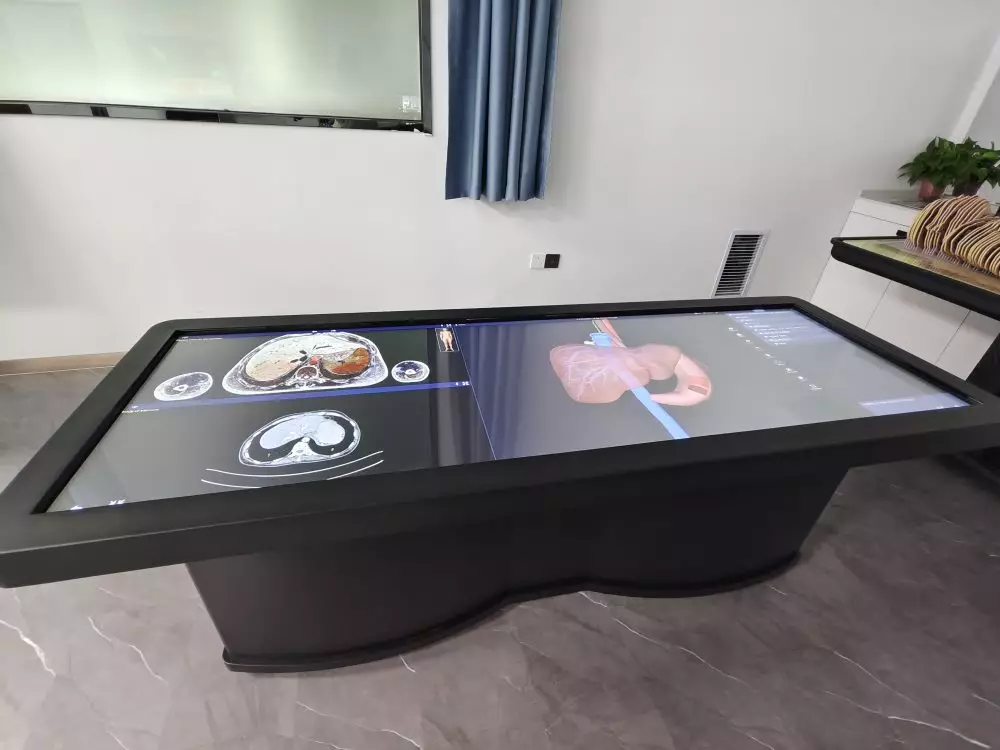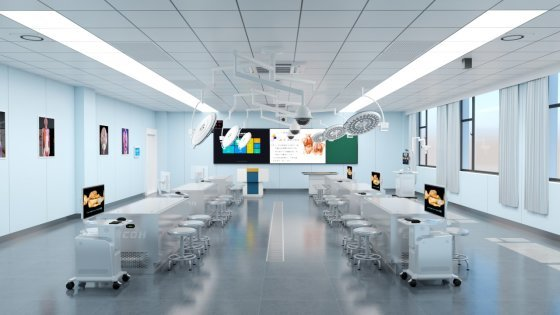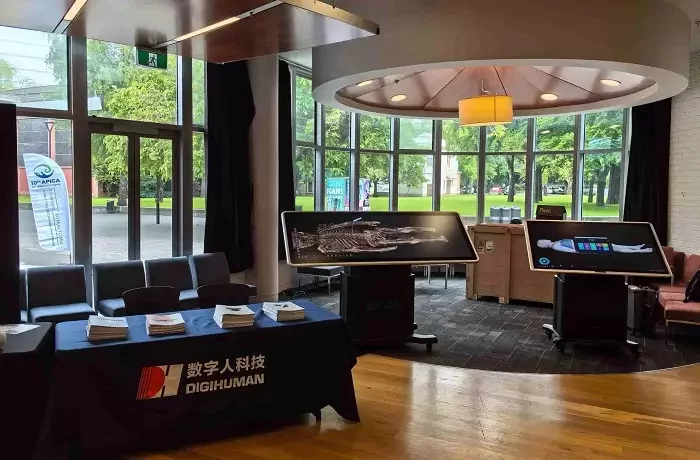Innovative Applications of Virtual Dissection Tables
Innovative Applications of Virtual Dissection Tables
Date:
The rise of the virtual dissection table has transformed how anatomy is taught in medical institutions. Traditional dissection has long faced practical and ethical challenges. Limited access to cadavers, health and safety concerns, and the irreversible nature of physical dissections have made it difficult for educators to provide consistent learning experiences.
Virtual dissection tables overcome these barriers by combining digital imaging, 3D modeling, and interactive controls to create an accurate and reusable representation of the human body.
The usefulness of these virtual dissection tables extends far beyond replacing cadaver-based anatomy lessons. So what other fields can benefit from the capabilities of virtual dissection tables? Let’s see:
Table of Contents
ToggleInnovative Applications of Virtual Dissection Tables
Based on the various features and functions of virtual dissection tables, they can be applied in:
1. Medical Education
For medical education, a digital dissection table has the following uses:
1) Anatomy
In anatomy classrooms, virtual dissection tables allow students to perform layered dissections on adjustable, high-precision 3D human models, such as “peeling away” skin and muscles, observing the skeletal system, exploring the pathways of nerves and blood vessels, and viewing from any angle. This reversible and repeatable practice deepens their understanding of complex human anatomical structures.
2) Histology
Leveraging the high-resolution 3D models of virtual dissection tables, students can observe the overall structure and positional relationships of tissues and organs from a macroscopic perspective. They can then zoom in for a detailed examination of microscopic tissue structures, strengthening their understanding of how body systems function as a whole.
3) Pathology
Virtual dissection tables also include pathological case libraries. Learners can study how diseases alter organ structure, compare healthy and affected tissues, and relate theoretical knowledge from the books to real cases. Besides no longer having to rely on imagination, this also helps develop students’ clinical diagnostic skills.
4) Clinical Case Demonstrations
Troubled by the hassle of presenting clinical cases? The clinical case module of the dissection table includes multiple real clinical cases, displaying the disease name, basic information, chief complaint, CT or MRI imaging, and diagnosis for each case.
In the classroom, students can directly engage with real cases and discuss treatment plans, laying a solid foundation for practical application.
2. Clinical Healthcare
Besides medical education, the clinical healthcare sector will also need digital dissection tables, as they help:
1) Surgical Planning
With precise virtual human models, surgeons can pre-evaluate surgical pathways and identify risk areas (such as the locations of major nerves and blood vessels) when dealing with complex procedures. This enables the development of optimized, personalized surgical plans, effectively improving success rates and reducing the risk of complications.
2) Doctor-Patient Communication
Traditional doctor-patient communication barriers often stem from professional terminology and abstract descriptions. By using the virtual dissection table, doctors can visually demonstrate to patients and their family members the location of the lesion, its risks to surrounding tissues, and the planned surgical procedure.
This visual communication method significantly enhances patients’ understanding of their condition and acceptance of the treatment plan, thereby increasing their cooperation.
3. Life Science Education
Is the virtual dissection table only suitable for professional medical settings? No, it also serves as an excellent medium for public life science education and health literacy promotion.
1) Science Museum Exhibitions
Interactive tables bring science exhibits to life. Visitors can explore the human body digitally, zoom into organs, and interact with systems in ways that static displays cannot offer. It creates memorable learning experiences for students of all ages. Perhaps it could become the inspiration for a future medical doctor.
2) School Exhibition Halls
In secondary and higher education, virtual dissection tables introduce students to human biology deeply, sparking interest in medicine and life sciences through realistic and hands-on learning experiences.
3) Community Health Programs
In community health centers, the virtual anatomy table can be utilized to conduct engaging health education activities. For example, it can demonstrate the damage smoking causes to the lungs, the impact of an unhealthy diet on the cardiovascular system, or the structural changes osteoporosis brings to bones.
This approach is more effective than mere lectures in conveying health concepts and promoting healthy lifestyles.
Advantages of Virtual Dissection Tables
Why do digital anatomy tables perform well across such diverse fields? It’s because it has core advantages over traditional methods:
- Repeatable Learning:Students can perform unlimited dissections, rotate views, and restore structures anytime, supporting continuous learning seamlessly.
- Ethical and Safe:Removes the need for human cadavers and chemical preservatives, creating a clean and sustainable training environment.
- Clinical Integration:Combines CT and MRI data for realistic anatomy visualization, helping learners connect textbook theory with real patient cases.
- Collaborative Use:Supports group interaction and discussion, making anatomy sessions more engaging and effective.
- Cost-Effective:Reduces long-term costs for specimens, preservation, and lab maintenance while offering high reusability.
- Cross-Disciplinary Application:Can be adapted for various disciplines, not just clinical medicine.
Want to Invest in Virtual Dissection Tables?
Digihuman is a trusted global brand in digital 3D human anatomy education, offering virtual dissection tables that combine advanced software with precision hardware to create an interactive and realistic learning experience.
- Built with high-definition,real human anatomical data, these systems allow for the simulation of real anatomical processes, combined with traditional anatomy teaching.
- Virtual human bodies can be enlarged, reduced, and rotated at any angle, deepening students’ understanding of spatial relationships.
- More than 1,700 CT and MRI scans are integrated into the platform, linking knowledgewith real clinical imaging to strengthen diagnostic and practical skills.
- Each table also includes real dissection videos, anatomy animations, and built-in quizzes that make learning engaging and adaptable for different teaching needs.
- With compatibility for AR devices, Digihuman enables immersive human anatomy simulations that take anatomy training beyond traditional classrooms.
Used by institutions in over 50 countries, the tables are recognized for their accuracy, affordability, and reliability. For educators, professionals, or communities seeking an ethical and cost-effective teaching tool, Digihuman’s virtual dissection tables stand out to meet all your needs!
Wrapping-Up
In conclusion, virtual dissection tables overcome the limits of traditional cadaver-based teaching. Their use now extends from medical classrooms to surgical planning, research, and public education, offering safe, repeatable, and highly visual learning experiences.
For institutions seeking a modern and reliable solution, Digihuman provides one of the most advanced digital anatomy tables available. If you are searching for a powerful tool for education and clinical training, welcome to contact us now!
Related Posts
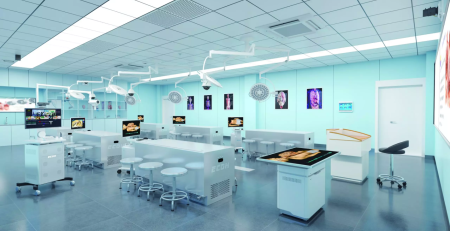 Articles
ArticlesWhat’s the Best Virtual Anatomy Table for Medical Education?
Virtual anatomy tables are now becoming an essential tool for medical training, with leading universities such as Harvard and Johns Hopkins already...
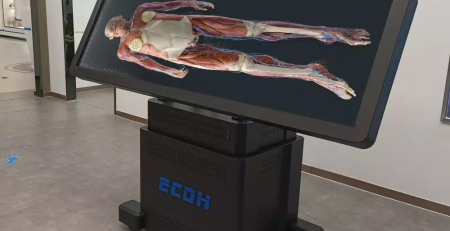 Articles
ArticlesA Comprehensive Guide to Virtual Dissection Table
The anatomy lab has long been an essential venue for cultivating medical students' practical skills. However, it also faces limitations...

